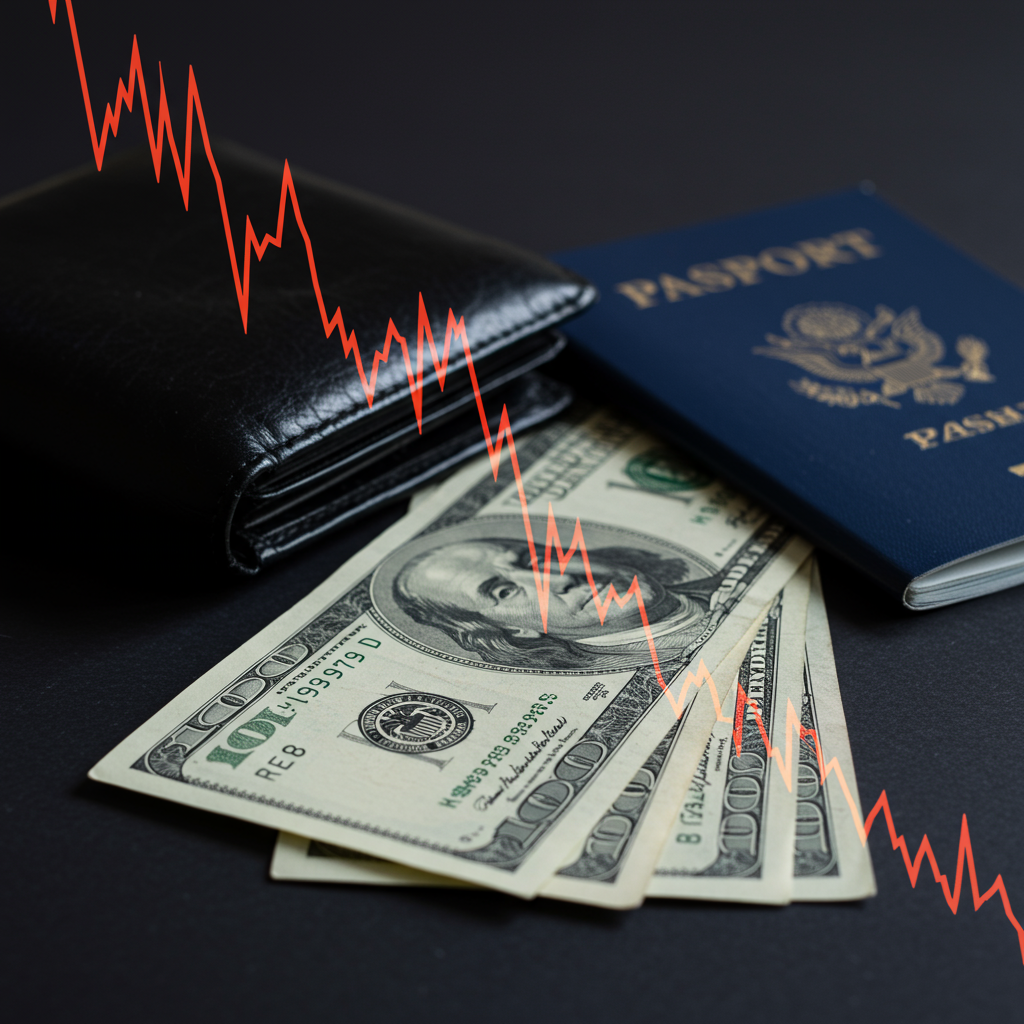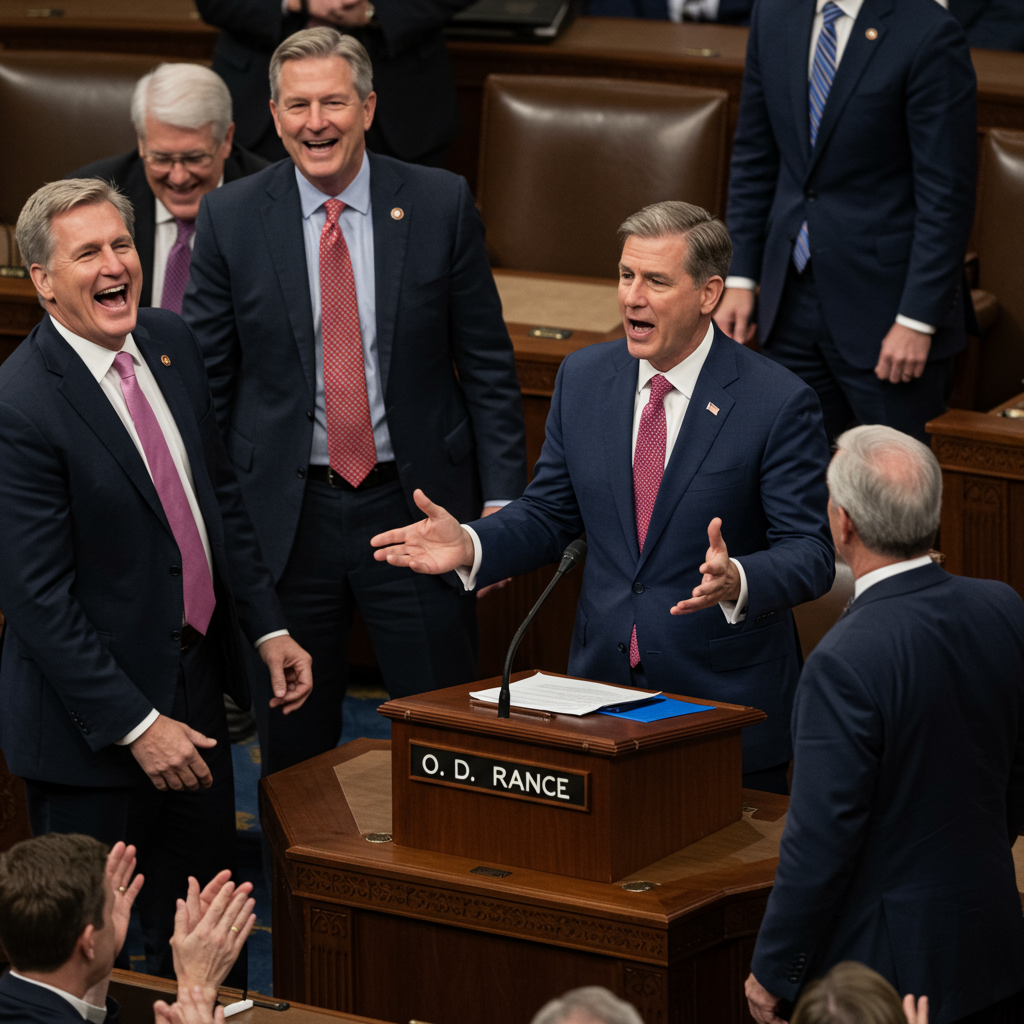Has the value of the U.S. dollar recently dropped? If you’ve heard news about the dollar hitting a multi-year low, you’re right. This decline isn’t just a statistic for financial experts; it can directly influence your daily life, from the cost of your next vacation abroad to the price of goods you buy every day. Understanding the reasons behind this shift and its potential consequences is crucial for navigating the current economic landscape.
Over recent months, the U.S. dollar has fallen significantly, reaching levels not seen in roughly three years. It has reportedly lost around 10% of its value this year alone. This stands in stark contrast to other major currencies, like the Euro, which has reportedly gained ground and hit its highest point against the dollar in nearly four years. This movement signals underlying shifts in global economic perceptions and conditions.
Why Did the U.S. Dollar Weaken?
Several intertwined factors contribute to the dollar’s value on the world stage. It acts as the world’s primary reserve currency, and its strength is influenced by global demand from central banks and financial institutions. Broader economic conditions within the United States also play a major role.
Economic stability is a key driver. Reports suggest growing concerns about the strength and stability of the U.S. economy have led some investors to pull back. Bilge Erten, an economics professor at Northeastern University, points out that the perceived “institutional quality” of the U.S. as a safe haven for investment has potentially been undermined. She questions the logic of investing in U.S. assets if the dollar is expected to lose value.
Interest rate expectations are another significant factor. Historically, higher U.S. interest rates compared to other countries tend to strengthen the dollar by making dollar-denominated assets, like U.S. Treasury bonds, more attractive to global investors. Conversely, expectations of lower interest rates can weaken the currency. Recent developments, including political uncertainties and potential economic softening, have led some economists to warn of risks like “stagflation” (slow growth and high inflation). This concern has reportedly shifted market expectations, with investors anticipating more interest rate cuts from the Federal Reserve than previously expected. This move towards lower anticipated rates makes dollar assets less appealing relative to those in economies where rates might stay stable or rise, contributing to the dollar’s decline.
The Role of Government Policies and Political Uncertainty
Specific U.S. government policies and political events have also fueled uncertainty and impacted the dollar. News reports indicating that President Donald Trump is considering a change in Federal Reserve leadership ahead of the current Chair Jerome Powell’s term end reportedly contributed to market jitters around the time of the dollar’s dip. President Trump has publicly pressured the Fed to lower borrowing costs, a stance the central bank had reportedly resisted while evaluating the impact of tariffs and maintaining low unemployment.
Economists have also raised concerns about the potential impact of President Trump’s legislative agenda, including a plan referred to as the “Big, Beautiful Bill.” Critics warn this legislation could add trillions to the federal debt, creating uncertainty about the country’s fiscal health, despite administration claims it would save money.
Furthermore, the administration’s trade policies, specifically tariffs, have played a complex role. While tariffs are theoretically intended to decrease demand for foreign currencies (thus strengthening the dollar), recent tariff implementations have reportedly coincided with the opposite effect – a dollar weakening against currencies like the Canadian dollar, Mexican peso, and Euro. This counter-intuitive outcome suggests that the broader market reaction, perhaps driven by concerns about economic growth and global trade tensions, outweighed the direct theoretical impact. Kenneth Rogoff, a professor at Harvard, notes that policies like tariffs can “accelerate the process” of dollar devaluation. He also highlights that discouraging foreign investment, such as through potential taxes on investors mentioned in proposed legislation, can explicitly drive the dollar down.
Is This Dip Normal or a Sign of Trouble?
Experts hold differing views on the primary driver of the recent dollar movement. While political and economic policies clearly have an influence, some, like Kenneth Rogoff, argue that the dollar’s dip is also part of its natural, long-term fluctuation. He notes that the dollar had reached recent highs similar to peaks in 2002 and 1985, periods that were followed by sharp declines. Rogoff suggests that a fall was projected regardless of the political landscape due to this typical cycle, although policies like tariffs may have sped it up.
Other analysts point to the dollar’s decline alongside a turbulent stock market as indicative of a potential “crisis of confidence.” Treasury Secretary Scott Bessent has publicly aimed to reassure markets, emphasizing that “America First” doesn’t mean “America alone” in trade and stressing the commitment to maintaining a stable dollar. However, some strategists remain cautious, viewing recent market upticks as merely a “relief rally” with more volatility ahead, especially concerning uncertain trade outcomes.
Fisher Investments provides a perspective suggesting the recent dip falls within the range of normal currency volatility. They argue that the dollar remains considerably stronger than its levels throughout the 2010s. While the dollar can fluctuate during stock market bull markets, it typically strengthens during bear markets due to investors seeking safe-haven assets like U.S. government bonds. Fisher posits that the recent dip doesn’t necessarily signal a major issue for the U.S. economy or stock market.
How the Weaker Dollar Impacts Your Wallet
The most direct effects of a weaker U.S. dollar are felt when you engage in international transactions or purchase imported goods.
International Travel Becomes More Expensive: When the dollar’s exchange rate weakens, your U.S. dollars buy less foreign currency. This means everything from hotel stays and meals to souvenirs and transportation costs more in dollar terms when you travel outside the country. A trip that might have fit your budget a few months ago could now be considerably pricier.
Imported Goods May Cost More: A weaker dollar also affects the price of goods brought into the United States. As Professor Erten explains, when a foreign seller sells products to the U.S., they need to convert the dollar payment back into their local currency. If the dollar has lost value, they receive less of their own currency for the same dollar amount. To maintain their desired profit margins, foreign exporters may raise the dollar price of their goods sold to the U.S. This can lead to higher costs for American consumers buying anything from imported cars and electronics to clothing and food items.
The U.S. economy currently relies heavily on imports; data suggests that only slightly more than half of goods and services purchased in 2023 were “made in America.” This dependency means consumers are likely to see price increases on a wide range of items if the dollar’s weakness persists.
Potential Benefits and Risks for the U.S. Economy
While consumers and travelers may face higher costs, a weaker dollar can offer a competitive edge for U.S. businesses that export goods and services.
Boost for U.S. Exports: With the dollar’s lower value, American-made products become cheaper for foreign buyers using stronger currencies. This can potentially increase demand for U.S. exports, providing a boost to domestic industries and potentially supporting manufacturing jobs. This effect aligns with stated goals from the Trump administration to revitalize U.S. manufacturing. Kenneth Rogoff notes that services provided by U.S. workers also cost less in international terms, making them more competitive.
Uncertainty for Investment and Jobs: On the flip side, concerns exist about the impact on foreign investment into the U.S. If the U.S. is perceived as a less stable or less profitable place to invest, potentially due to economic uncertainty, policy unpredictability, or a weakening currency, foreign capital inflows could decrease. A reduction in foreign investment could potentially impact the labor market, possibly leading to job losses, although the unemployment rate was recently reported at a low 4.2%.
Financial experts caution against making impulsive investment decisions based solely on short-term market volatility or currency fluctuations. While events like tariffs and economic uncertainty can cause markets to dip, historically, these downturns are often temporary. For long-term investors, especially those focused on retirement savings, maintaining a consistent investment strategy, like dollar-cost averaging, and focusing on long-term goals is generally advised over reacting to day-to-day news.
Frequently Asked Questions
Why did the U.S. dollar value recently dip to a three-year low?
The recent dip in the U.S. dollar’s value is attributed to a combination of factors. These include growing concerns about the stability of the U.S. economy, political uncertainty surrounding potential changes at the Federal Reserve and trade policies like tariffs, and shifting investor expectations about future U.S. interest rates, with expectations for more rate cuts increasing. Some experts also view the decline as part of the dollar’s natural cyclical fluctuation after a period of high value.
How does a weaker U.S. dollar affect my personal finances?
A weaker U.S. dollar makes things more expensive for Americans in two primary ways: International travel becomes pricier because your dollars buy less foreign currency, and imported goods likely cost more because foreign sellers need to raise prices to receive the same value when converting back to their local currencies. Conversely, if you own stocks in U.S. companies that export heavily, their foreign earnings might increase when converted back to dollars.
What are experts saying about the future outlook for the U.S. dollar?
Experts offer varied perspectives. Some believe the dollar’s dip is primarily cyclical, a natural correction after reaching high levels, possibly accelerated by recent policies like tariffs. Others link the weakness more directly to concerns about economic uncertainty, policy unpredictability, and changing interest rate expectations. While the U.S. Treasury has voiced commitment to a strong dollar, market strategists warn that continued policy uncertainty could lead to further volatility.
The recent dip in the U.S. dollar highlights the complex interplay between global economics, domestic policy, and investor sentiment. While a weaker dollar makes international travel and imported goods more expensive for American consumers, it can provide a boost to U.S. exporters. Experts offer mixed views on whether the decline is primarily a cyclical event or a reaction to specific policy concerns, but they generally agree that political and economic uncertainty contributes to volatility. Staying informed about these trends is key to understanding their potential impact on your financial life.
Word Count Check: 1150




